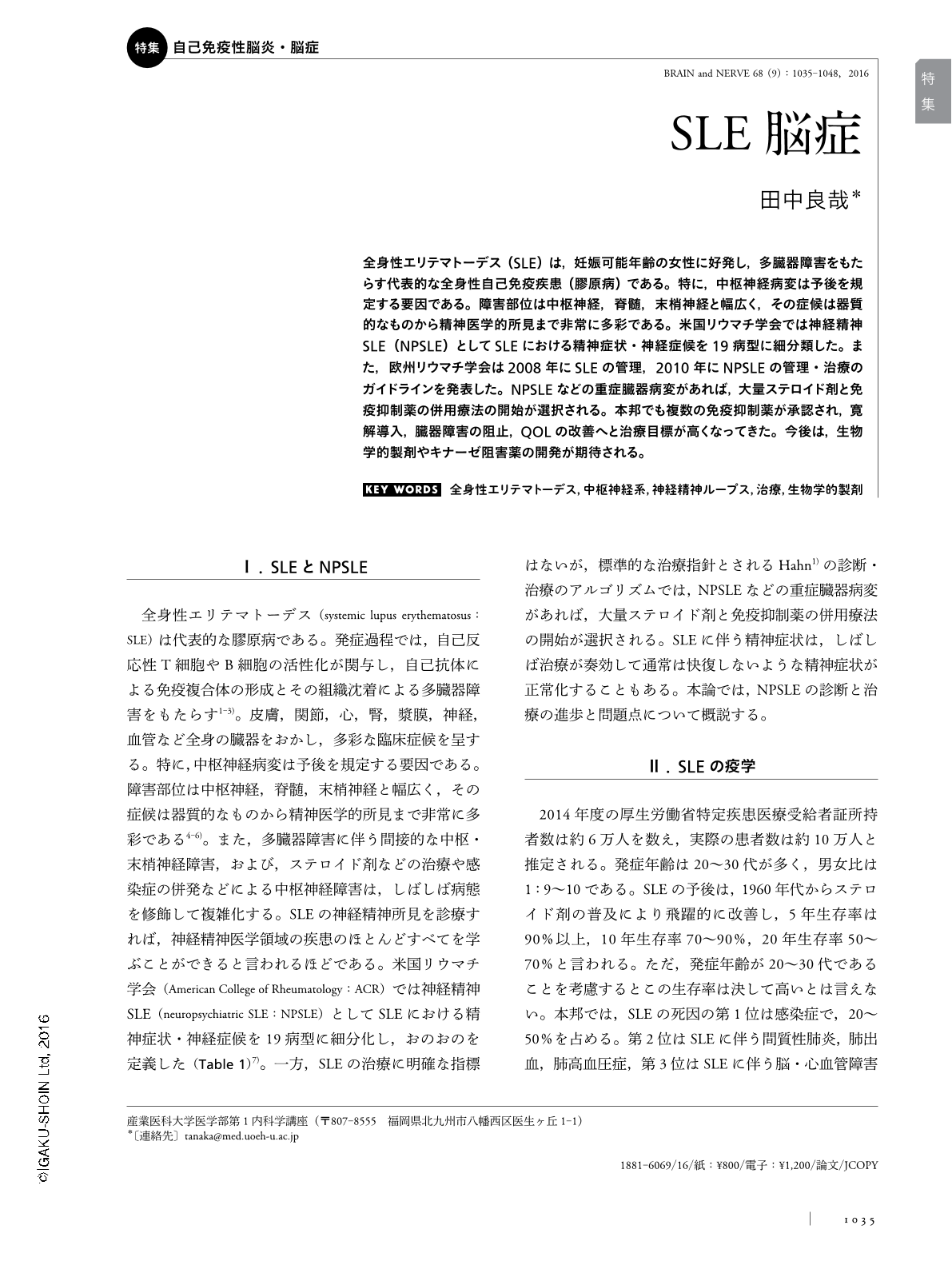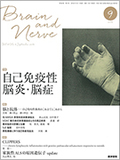Japanese
English
- 有料閲覧
- Abstract 文献概要
- 1ページ目 Look Inside
- 参考文献 Reference
全身性エリテマトーデス(SLE)は,妊娠可能年齢の女性に好発し,多臓器障害をもたらす代表的な全身性自己免疫疾患(膠原病)である。特に,中枢神経病変は予後を規定する要因である。障害部位は中枢神経,脊髄,末梢神経と幅広く,その症候は器質的なものから精神医学的所見まで非常に多彩である。米国リウマチ学会では神経精神SLE(NPSLE)としてSLEにおける精神症状・神経症候を19病型に細分類した。また,欧州リウマチ学会は2008年にSLEの管理,2010年にNPSLEの管理・治療のガイドラインを発表した。NPSLEなどの重症臓器病変があれば,大量ステロイド剤と免疫抑制薬の併用療法の開始が選択される。本邦でも複数の免疫抑制薬が承認され,寛解導入,臓器障害の阻止,QOLの改善へと治療目標が高くなってきた。今後は,生物学的製剤やキナーゼ阻害薬の開発が期待される。
Abstract
Central nervous system damage, a major organ manifestation of systemic lupus erythematosus (SLE), causes significant morbidity and mortality. Designating this condition as neuropsychiatric SLE (NPSLE), the American College of Rheumatology defines it as involving the central and peripheral nervous systems and being characterized by various manifestations including stroke, seizures, and psychosis. NPSLE treatment mainly seeks to reduce damage accrual. In patients with NPSLE, the use of high-dose corticosteroids is recommended in combination with immunosuppressants, such as mycophenolate mofetil and intravenous cyclophosphamide pulse therapy. This can be accomplished by controlling the activity of the disease, minimizing the use of corticosteroids, and optimizing the management of comorbidities, including cardiovascular risk factors. An international task force analysis of a treat-to-target strategy for SLE (T2T/SLE) recommended targeting remission, preventing damage, and improving quality of life. Thus, more effective and less toxic treatments, such as those using biologics or kinase inhibitors, are still being developed for the treatment of SLE/NPSLE.

Copyright © 2016, Igaku-Shoin Ltd. All rights reserved.


